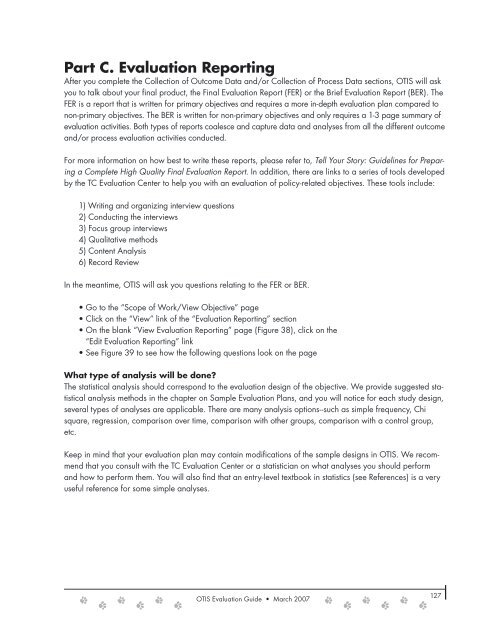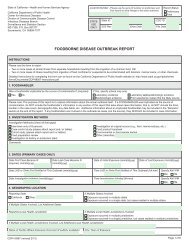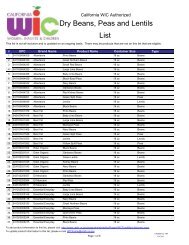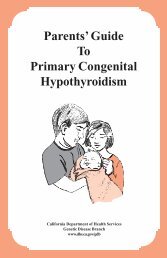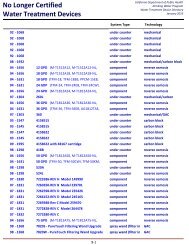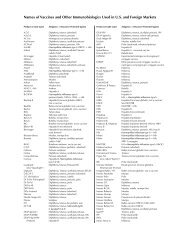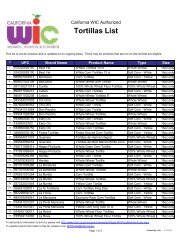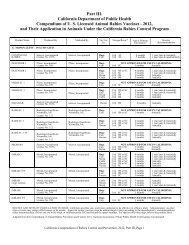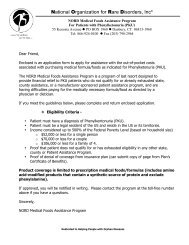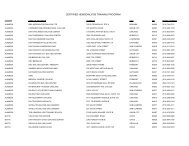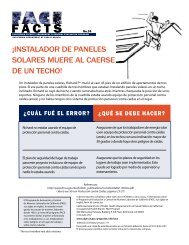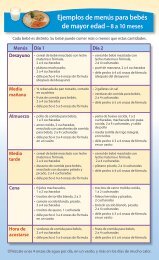OTIS Evaluation Guide (PDF) - California Department of Public Health
OTIS Evaluation Guide (PDF) - California Department of Public Health
OTIS Evaluation Guide (PDF) - California Department of Public Health
Create successful ePaper yourself
Turn your PDF publications into a flip-book with our unique Google optimized e-Paper software.
Part C. <strong>Evaluation</strong> Reporting<br />
After you complete the Collection <strong>of</strong> Outcome Data and/or Collection <strong>of</strong> Process Data sections, <strong>OTIS</strong> will ask<br />
you to talk about your final product, the Final <strong>Evaluation</strong> Report (FER) or the Brief <strong>Evaluation</strong> Report (BER). The<br />
FER is a report that is written for primary objectives and requires a more in-depth evaluation plan compared to<br />
non-primary objectives. The BER is written for non-primary objectives and only requires a 1-3 page summary <strong>of</strong><br />
evaluation activities. Both types <strong>of</strong> reports coalesce and capture data and analyses from all the different outcome<br />
and/or process evaluation activities conducted.<br />
For more information on how best to write these reports, please refer to, Tell Your Story: <strong>Guide</strong>lines for Preparing<br />
a Complete High Quality Final <strong>Evaluation</strong> Report. In addition, there are links to a series <strong>of</strong> tools developed<br />
by the TC <strong>Evaluation</strong> Center to help you with an evaluation <strong>of</strong> policy-related objectives. These tools include:<br />
1) Writing and organizing interview questions<br />
2) Conducting the interviews<br />
3) Focus group interviews<br />
4) Qualitative methods<br />
5) Content Analysis<br />
6) Record Review<br />
In the meantime, <strong>OTIS</strong> will ask you questions relating to the FER or BER.<br />
• Go to the “Scope <strong>of</strong> Work/View Objective” page<br />
• Click on the “View” link <strong>of</strong> the “<strong>Evaluation</strong> Reporting” section<br />
• On the blank “View <strong>Evaluation</strong> Reporting” page (Figure 38), click on the<br />
“Edit <strong>Evaluation</strong> Reporting” link<br />
• See Figure 39 to see how the following questions look on the page<br />
What type <strong>of</strong> analysis will be done?<br />
The statistical analysis should correspond to the evaluation design <strong>of</strong> the objective. We provide suggested statistical<br />
analysis methods in the chapter on Sample <strong>Evaluation</strong> Plans, and you will notice for each study design,<br />
several types <strong>of</strong> analyses are applicable. There are many analysis options--such as simple frequency, Chi<br />
square, regression, comparison over time, comparison with other groups, comparison with a control group,<br />
etc.<br />
Keep in mind that your evaluation plan may contain modifications <strong>of</strong> the sample designs in <strong>OTIS</strong>. We recommend<br />
that you consult with the TC <strong>Evaluation</strong> Center or a statistician on what analyses you should perform<br />
and how to perform them. You will also find that an entry-level textbook in statistics (see References) is a very<br />
useful reference for some simple analyses.<br />
<strong>OTIS</strong> <strong>Evaluation</strong> <strong>Guide</strong> • March 2007<br />
127


